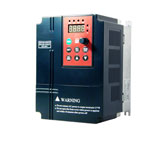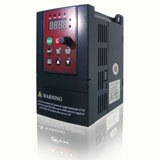Variable Frequency Drive repair and maintenance
Q:
I have workshop to maintenance and repair the variable frequency drive, after repairing the VFD must be tested and loaded to full load to ensure that the repair done 100%. So I need to couple two AC motor to make the VFD loaded. But I can't access to DC bus circuit each time, because I test and repair a lot of brands that could be contain DC bus terminal and could not.
The load VFD can absorb a certain limit of energy from the test VFD, in another words the dynamic braking resistor which connected to load VFD (i.e 37KW) can absorb a certain limit of the energy from the test VFD (i.e 15KW), so its depend on size of the load VFD and rating of DB resistor?
A:
Actually, there's a limit to how much the DRIVE can handle, and then there's a limit to what the dynamic braking resistor can handle. Generally, the manufacturer is going to size the DB resistor under what the VFD can take in continuously. Here I'll have to defer to the various VFD manufacturers. For your application where you need to test the VFD under full load current simply to verify that you've repaired it correctly, a motor running on commercial power is going to be your best bet. If you have a certain maximum size VFD out of those you need to test, all you'd need is one motor of that size and some way to couple your test motor to it - cogged belt or V-belt, for example. That way you could load a motor/VFD to full load by over-speeding say a 100Hp motor. Anything from 1-100Hp could be load tested this way. The major expense would be the test fixture that would allow you to mount your test motors and couple them up to the load.
I did VFD repair for many years. It has been my experience that if the drive operates an unloaded motor properly after being repaired (and the output waveform looks right on an oscilloscope), it will work properly under load. I've been in this business since 1986. In all that time I can count on one hand the number of drives that passed a no-load motor test and then wouldn't run properly under load. Those failures were all in the Hall-effect current transformers, which are normally pretty reliable devices. One other option you might look at is a load bank. Connect the VFD to a large, high-wattage resistor bank (with some inductance) and load it that way. Many VFD manufacturers test their inverters this way. In combination with a motor no-load test, this should meet your test requirements, and a multiple-tapped loadbank would be much easier to deal with than dragging out test motors and coupling them up to your load, and possibly less expensive.
I have workshop to maintenance and repair the variable frequency drive, after repairing the VFD must be tested and loaded to full load to ensure that the repair done 100%. So I need to couple two AC motor to make the VFD loaded. But I can't access to DC bus circuit each time, because I test and repair a lot of brands that could be contain DC bus terminal and could not.
The load VFD can absorb a certain limit of energy from the test VFD, in another words the dynamic braking resistor which connected to load VFD (i.e 37KW) can absorb a certain limit of the energy from the test VFD (i.e 15KW), so its depend on size of the load VFD and rating of DB resistor?
A:
Actually, there's a limit to how much the DRIVE can handle, and then there's a limit to what the dynamic braking resistor can handle. Generally, the manufacturer is going to size the DB resistor under what the VFD can take in continuously. Here I'll have to defer to the various VFD manufacturers. For your application where you need to test the VFD under full load current simply to verify that you've repaired it correctly, a motor running on commercial power is going to be your best bet. If you have a certain maximum size VFD out of those you need to test, all you'd need is one motor of that size and some way to couple your test motor to it - cogged belt or V-belt, for example. That way you could load a motor/VFD to full load by over-speeding say a 100Hp motor. Anything from 1-100Hp could be load tested this way. The major expense would be the test fixture that would allow you to mount your test motors and couple them up to the load.
I did VFD repair for many years. It has been my experience that if the drive operates an unloaded motor properly after being repaired (and the output waveform looks right on an oscilloscope), it will work properly under load. I've been in this business since 1986. In all that time I can count on one hand the number of drives that passed a no-load motor test and then wouldn't run properly under load. Those failures were all in the Hall-effect current transformers, which are normally pretty reliable devices. One other option you might look at is a load bank. Connect the VFD to a large, high-wattage resistor bank (with some inductance) and load it that way. Many VFD manufacturers test their inverters this way. In combination with a motor no-load test, this should meet your test requirements, and a multiple-tapped loadbank would be much easier to deal with than dragging out test motors and coupling them up to your load, and possibly less expensive.



